 There’s been some curious goings-on around the recent elevation of one of the most unfashionable whiskies ever to walk away with a gong at the World Whisky Awards. The main question is: How on earth did Speyburn 25 year-old manage to scoop the title of Best Highland Malt Whisky at the WWA 2012? Well, before we investigate further, let’s look at the whisky itself.
There’s been some curious goings-on around the recent elevation of one of the most unfashionable whiskies ever to walk away with a gong at the World Whisky Awards. The main question is: How on earth did Speyburn 25 year-old manage to scoop the title of Best Highland Malt Whisky at the WWA 2012? Well, before we investigate further, let’s look at the whisky itself.
Jim Murray is a divisive figure, but one thing that isn’t really in question is that he has a formidable palate – he must do to get through so many whiskies every year with his tastebuds still intact. Now, whatever your opinions on Jim’s endearingly enormous opinion of himself (devoted Bible readers may be surprised to learn that Ardbeg, rye and pot still whiskey all existed before JM first put lips to glass), let’s give credit where it’s due – way back in 2007, Mr Murray was the first person I can find who cottoned on that Speyburn 25yo had been transformed from an anoymous mediocrity into a remarkably good whisky, giving it 92 points in his 2008 Bible with the comment “Last year wasn’t overly impressed [sic]; now I’m taken aback by its beauty. Some change.”
So, did this ringing endorsement herald a sea-change in the fortunes of this modest, overlooked whisky? Er, no. Well, not immediately (for TWE anyway). Perhaps not too many people were actually reading that entry in the Bible? In the end, nothing really happened for Speyburn here at TWE until we came to fill in the blank description for Speyburn 25yo on our website last year, at which point I discovered Jim’s big score and mentioned it in my blurb. Then it started moving at a very respectable rate – credit again to the JM effect.
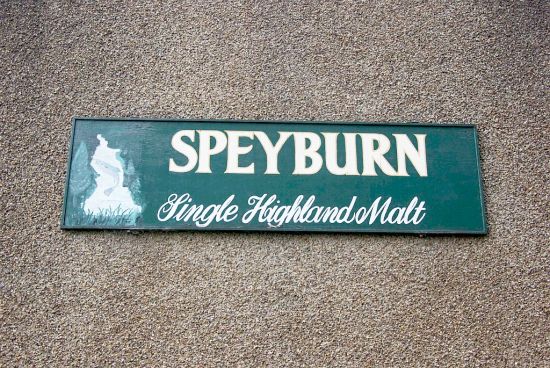
A no-nonsense sign
Fast forward to this year’s final World Whisky Awards 2012 judging session in London a fortnight or so ago, which yours truly was privileged to attend. Tasting through the amassed category award-winners, we were writing tasting notes and scoring the drams to decide which would become the trophy-winners.
As is usual with the final round at such events, the majority of the contenders (all tasted blind) were big, assertive, high-strength, strongly-flavoured drams. This is one of the perils of big taste-offs with multiple entries – when faced with so many whiskies, it is natural that the ‘loudest’ become the most memorable and tend to score highest with the judges. Tasting a big group of randomly-ordered whiskies in one big session generally tends to work against the subtler, more elegant drams as even much-practised palates become jaded.
Not this time (for me, at least). The category-winning single malts were presented together towards the end of the session. I tried to work out which order to tackle them in by assessing colour, nose and strength. Although placed towards the end numerically, a (relatively) pale dram at 46% was one of the lowest strengths, so I came to it sooner. It had everything I personally look for in a whisky. There was sweetness, subtlety, a faint hint of smoke and – most important of all, and something that we’re explicitly instructed as judges to prize most highly – an excellent balance, which many of the shoutier whiskies, entertaining and impressive as they are, just can’t achieve. I was hugely impressed and gave this whisky a provisional nine out of ten – my only ‘9’ of the day, although there were several high ‘8’s. I’m quite a tough judge.
I proceeded to the palate-assaulting cask strength bruisers / first-fill sherry monsters. Although with one exception they were all good or even great whiskies, I didn’t rate any of them quite so highly – besides which, my general tastes these days have drifted from full-on tastebud-crushers (not that I don’t love those when I’m in the mood) towards an altogether gentler, more restrained style, spirit-led rather than oak-led and bottled (or self-reduced) to a mid-40s abv strength. So I went back to my little smoke-threaded sweetie. Yup, still my favourite. My score was confirmed, and my curiosity was aroused. What could this whisky be?
After the session, as we were milling around, I asked one of the organisers quietly for the identity of this particular dram. “Speyburn 25”, came the answer.
“Wait – what? Speyburn 25?! ”
“Yes, really.”
“Wow.”
The following evening at the Awards dinner, held in the posh surroundings of the Waldorf Hilton, brought further strangeness. First of all, The Whisky Exchange failed to win Online Retailer of the Year. Shome mishtake, shurely? [Only joking, chaps – after three years, I suppose it was only fair to make it someone else’s turn – Ed.]. More bizarrely, what was this in the Highland 21yo & over category? The winner is… Speyburn 25?! Shome mishtake, definitely.
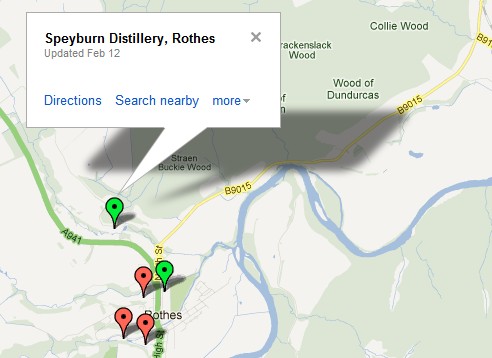
The blue wobbly thing on the right of the map is the River Spey
The Speyburn distillery, you see, is in Speyside. The clue’s in the name. It’s one of five distilleries clustered round the town of Rothes, the others being Glen Grant, Glenrothes, Caperdonich and, er, Glen Spey. What has happened here? As a sub-category of Highland whiskies, can Speyside distilleries now choose which region to enter for at the awards?
We don’t need to look too far for the answer: Speyburn is one of several Speyside distilleries to call itself a Highland whisky on the bottle. Somewhere in the awards process, either on the application or during the pre-judging admin stage, someone simply went with the evidence of the bottle in front of them and ticked the wrong box. This is unfortunate, but surely understandable, as this is exactly the sort of innocuous admin task that gets passed down the line to a lowly assistant.
What’s slightly more concerning is that no-one at the WWA noticed at any stage during the three rounds of judging that Speyburn 25yo was in the wrong category – even after it won. Unnervingly, then, it stands to reason that if Speyburn 25 hadn’t been better than the Highland malts it was up against, none of us would have been any the wiser that this cock-up had occurred at all.
Anyway, for what it’s worth, here’s my notes on Speyburn 25yo (I bought a bottle when I got back to the office):
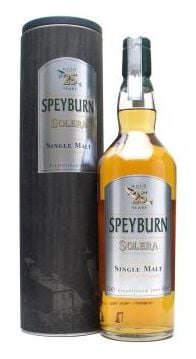
Nose: Sweet & honeyed initially, with some almond & hazelnut notes. Next, some rich cake / patisserie aromas. Leave it in the glass for a few minutes and some amazing wax jacket, marmalade & polished oak aromas emerge, along with a delicate little thread of smoke and a hint of something menthol that rounds things off perfectly.
Palate: Oak and smoke, with a lovely compensating sweetness. The nuttiness, marmalade and honey are all here, with apple pie – and although the oak threatens a mid-palate takeover, the gentle smoke and a lively burst of juicy citrus ensure that an elegant balance is retained, with no individual flavour dominating.
Finish: Long, lightly drying, yet juicy, sweet and spicy.
Comment: At 46% and unchilfiltered, with consummate balance and enough elements of flavour to keep the most demanding palates happy, this Speyburn is unquestionably the best I’ve ever tried from this distillery.
Personally, I think that perhaps it’s time to stop allowing Speyside distilleries to put ‘Highland Whisky’ on their labels and packaging – unless they put Speyside as well. I say this partly out of self-interest, as several times a year I have to explain what is going on to one of the numerous folk who email or call to inform us – in tones ranging from gleeful to disproportionately angry – that we have made a mistake on our website. Worryingly, as well as the general punters I have also had the following conversation with more than one distillery representative / PR person in the last couple of years:
Caller: You’ve got a mistake on your website.
Me: Oops – thanks for letting us know. Where is it?
Caller: You’ve got Aberlour / Glenfarclas / Macallan / Strathisla / Ardmore / Tomatin /an Cnoc / Glendronach / Miltonduff / Glenburgie / Longmorn / Glenglassaugh / Glen Keith / Speyburn [… And that’s just the OB’s, for crying out loud – Ed…] on your website as a Speyside, when any fool knows that it’s a Highland – it even says so on the label!!
Me: Ah. It’s actually a Speyside – in fact, really, it’s both.
Caller: ????
Me: Think about claret. If you’ve got a Pauillac or a Medoc or a St. Emilion that means the wine is from those districts. But it’s all still Bordeaux. Or think about Cognac – all Cognac is French brandy, but not all French brandy is Cognac. Speyside is the same – it’s a sub-region of the Highlands. All Speyside whisky is from the Highlands, but not all Highland whisky is Speyside.
Caller: So it’s actually both Speyside AND Highland…?
Me: Yes – they’re not mutually exclusive. It is confusing, but historically a lot of official bottlings from Speyside distilleries have always put Highland on the label – Macallan for example, and that’s one of the quintessential Speyside whiskies, just like Glenfarclas or Aberlour – who both also use Highland instead of Speyside in their branding. There’s also been some historical confusion and debate over the exact boundaries of Speyside – lots of writers have differences of opinion over whether certain distilleries like Glenglassaugh or an Cnoc or Glendronach or Tomatin are actually Speyside distilleries or not. For us, Michael Jackson was the greatest, most knowledgeable whisky writer, so we use his classifications throughout TWE for the sake of consistency. He calls all four of those distilleries I just mentioned Speyside, and that’s good enough for us.
Caller: So if my whisky is actually Speyside, why doesn’t it say so on the label?
Me: Good question…
You get my point. Scotch whisky in general and single malt whisky in particular are confusing enough for the general public, and the concept of regionality in whisky is nebulous enough already without the distilleries – who all pay lip-service to education and making things easier for new consumers to understand – deliberately making the matter more murky and complicated. Most people in the industry will admit privately or publicly that regionality is almost worthless when it comes to flavour distinctions in mainland Scotland because there are far too many exceptions to any rule you try to impose.
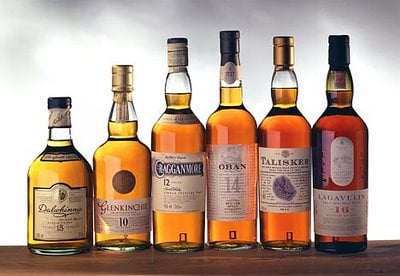
Even the Classic Malts themselves, whose reason for existence is to push shedloads of product the regionality concept, are somewhat muddled in this way, having (for reasons I’ve never understood) two Highland representatives – one of which, Dalwhinnie, has no other significant Highland distilleries anywhere near it and therefore contributes nothing at all to anyone’s understanding of regionality except by being different to Oban. Unfortunately, while it certainly achieves that modest aim, at the same time Dalwhinnie is not entirely dissimilar to Speyside representative Cragganmore (or even Simpleton of Dufftown for that matter) – which kind of defeats the purpose the Classic Malts were lumped together to fulfil.
Diageo, though, at least have the good sense to label their regions properly, which is not something that many of the other significant players can claim, judging by the long list of not-quite-erroneous-but-bloody-misleading official bottlings above. Pernod are the worst offenders numerically, but Inver House only own five distilleries and have managed to get two of them ‘wrong’ under Michael Jackson / TWE criteria (and despite updating the packaging for Knockdhu / an Cnoc only a few years ago).
That’s not a good ratio, and we now find ourselves in the current situation where the hapless Speyburn 25, through no fault of its own, has ended up inadvertently in the unfortunate position of having won its owners an award they shouldn’t have been in the running for. The fact that by doing so it’s also embarrassed the country’s foremost and only print media whisky publication suggests that now is perhaps the time for a change across the board. Over to those champions of clarity at the Scotch Whisky Assoc….ah. Never mind.
Still, the Speyburn brand is in the process getting a facelift – as surely befits its status as a World Whisky Award winner. After all this, though, it will be interesting to see which region appears on the label.
For more on Speyburn have a look at Billy’s post from his visit last year.


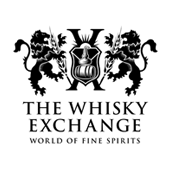




 Enjoy responsibly
Enjoy responsibly
Comments
the cock-up seems to have been to speyburn’s benefit. it might well have not won an award if correctly entered in the speyside category and without the award to “confirm” murray’s rating its reputation might have taken longer to overhaul than it now presumably will.